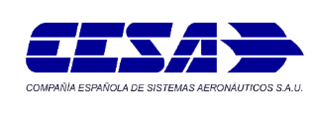

CESA’s commitment to H₂ technology has reached an important milestone with the testing of its fuel cell system under real loads. CESA has been working on developing high-temperature PEM technology for several years with a view to developing hydrogen-fuelled power generation systems that can be placed onboard safely.
Fuel cells are a clean and efficient form of generating power using the chemical energy stored in a fuel. They do not have moving parts, and the only by-products are water and heat. This makes them highly attractive from an energy efficiency standpoint, in addition to having zero environmental impact.

Example of developed stacks
Development of H₂ cells
The lines of work followed have attempted to cover all phases, from the basic development of the technology to the final aeronautical application. This therefore includes the development of new materials, coatings and manufacturing processes for the basic components (bipolar pates and MEA’s), analyzing the integration of these systems in the aircraft, storage and production of H₂ in the aircraft and modelling the system, including the electrochemistry.
The tests conducted successfully include a 1kW power stack prototype developed under aeronautical specifications. The stack and the corresponding cooling architecture were connected to a load, in this case an industrial refrigeration fan, managing to drive it exclusively with the power generated by the fuel cell.
The architecture for connecting the cell system to a load is not trivial: it is necessary to condition the cell power to the load using converters, batteries, capacitors, etc., and the issue of control architectures must be carefully considered for complex, non-linear systems with strong interactions, such as PEM fuel cells. The control architecture must provide the flexibility needed to deal with the load usage cycles, and a smart control is required to manage said loads appropriately.

Wiring scheme for the cell + load architecture (top) and actual image of the assembly (bottom).

